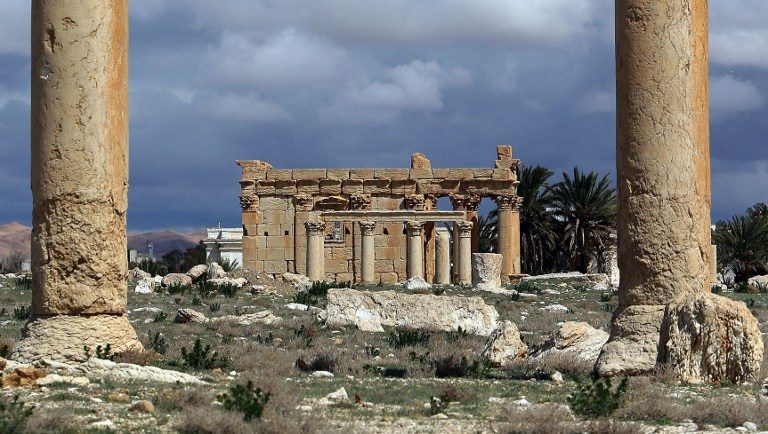SUMMARY
This is AI generated summarization, which may have errors. For context, always refer to the full article.

DAMASCUS, Syria – Islamic State (ISIS) group jihadists on Sunday, August 23, blew up the ancient temple of Baal Shamin in the UNESCO-listed Syrian city of Palmyra, the country’s antiquities chief told Agence France-Presse.
“Daesh placed a large quantity of explosives in the temple of Baal Shamin today and then blew it up causing much damage to the temple,” said Maamoun Abdulkarim, using another name for ISIS.
ISIS, which controls swathes of Syria and neighboring Iraq, captured Palmyra on May 21, sparking international concern about the fate of the heritage site described by UNESCO as of “outstanding universal value”.
“The cella (inner area of the temple) was destroyed and the columns around collapsed,” he said.
The Syrian Observatory for Human Rights, a Britain-based group that monitors the country’s civil war, confirmed the destruction of the temple.
Baal Shamin was built in 17 AD and it was expanded under the reign of Roman emperor Hadrian in 130 AD.
Known as the “Pearl of the desert”, Palmyra, which means City of Palms, is a well-preserved oasis 210 kilometers (130 miles) northeast of Damascus.
Its name first appeared on a tablet in the 19th century BC as a stopping point for caravans traveling on the Silk Road and between the Gulf and the Mediterranean.
But it was during the Roman Empire – beginning in the first century BC and lasting another 400 years – that Palmyra rose to prominence.
Before the arrival of Christianity in the second century, Palmyra worshipped the trinity of the Babylonian god Bel, as well Yarhibol (the sun) and Aglibol (the moon).
“Our darkest predictions are unfortunately taking place,” said Abdulkarim.
The jihadists “carried out executions in the ancient theatre (of Palmyra), they destroyed in July the famous Lion Statue of Athena… and transformed the museum into a prison and a courtroom.”
ISIS had mined the ancient site in June before destroying the Lion Statue of Athena – a unique piece made of limestone that stood more than 3 meters high (10 feet) that stood outside a museum.
Funerary busts were also destroyed by ISIS in Palmyra.
ISIS’s harsh version of Islam considers statues and grave markers to be idolatrous, and the group has destroyed antiquities and heritage sites in territory under its control in Syria and Iraq.
The latest developments come just days after ISIS jihadists beheaded the 82-year-old retired chief archaeologist of Palmyra.
On Sunday the family of Khaled al-Assaad said the jihadists had mutilated his body after killing him execution-style on Tuesday, August 18. – Rappler.com
Add a comment
How does this make you feel?
There are no comments yet. Add your comment to start the conversation.